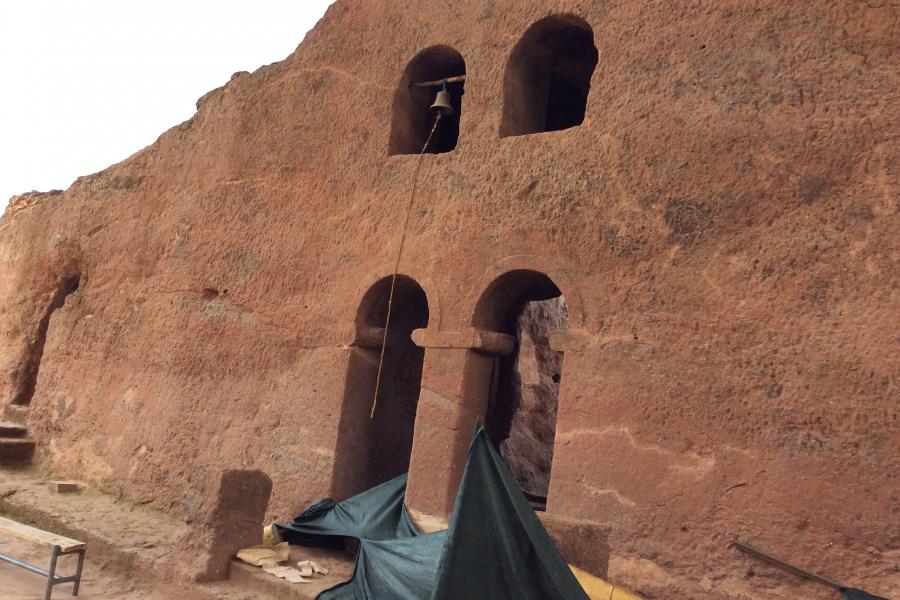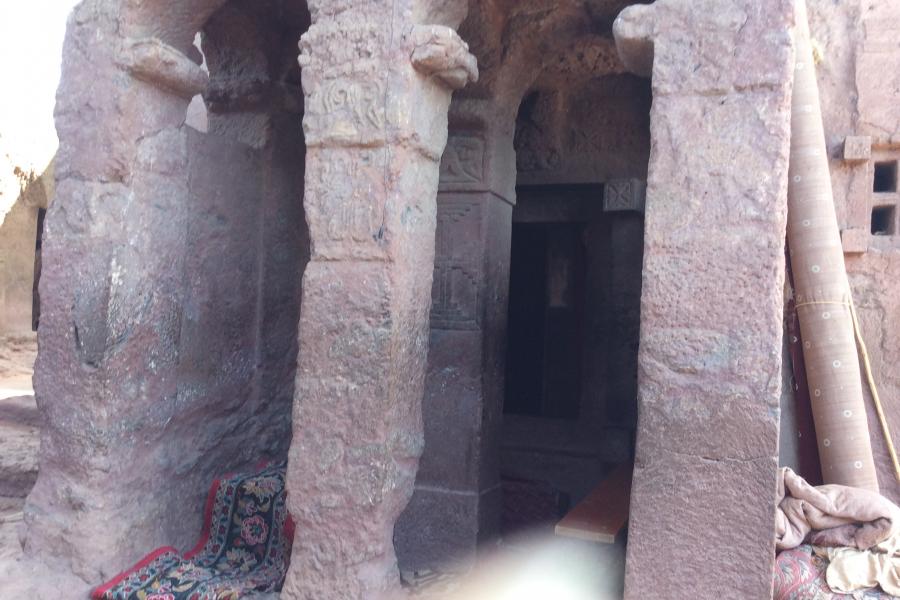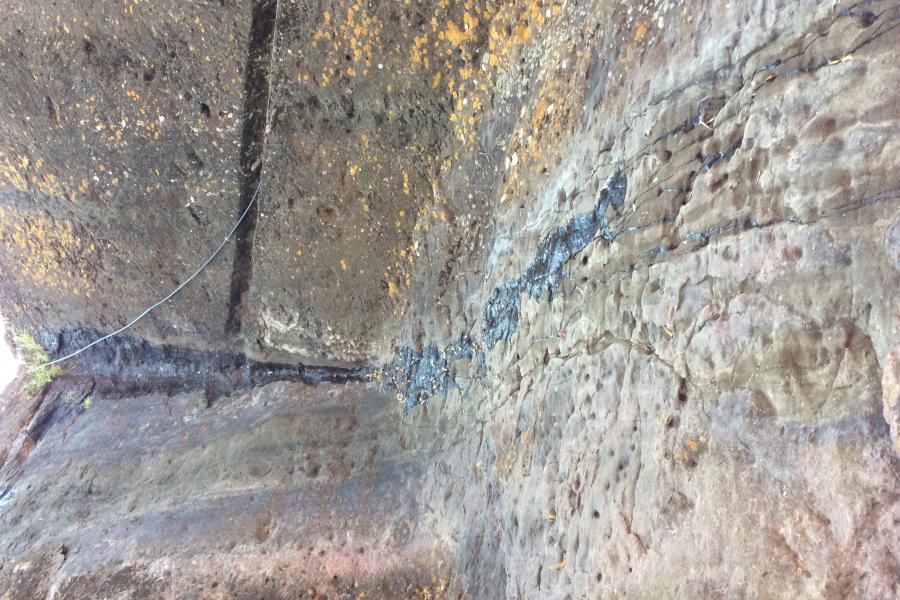Churches of Lalibela
Country
Just before eight I spotted Richard at the entrance to the lodge, and we went straight down to the entrance where I paid for the 50$ ticket.
Richard turned out to be a great guide and gave me an excellent insight into the history of this magnificent place. What makes these churches so interesting is the fact that they are still being used today, attracting some 80.000 pilgrims every year, mainly of the Ethiopian Orthodox faith. About two-thirds of Ethiopians are Christians, the majority of which belong to the Orthodox Church (formerly part of the Coptic Church of Egypt). There is a belief that pilgrims share the same blessing at Lalibela as a visit to Jerusalem would bring upon them. There are 11 churches at Lalibela, all carved inside and out from a single rock (monolith) from the “top down” with the roof at ground level. They were built some 900 years ago by king Lalibela, when Muslim conquests were preventing Christians from visiting Jerusalem and the Holy Land. The idea was to to build a “new Jerusalem” a symbol of the Holy Land. There are replicas of the tomb of Christ, of Adam and of the crib of Nativity. Lalibela became a substitute for the Holy places of Jerusalem and Bethlehem. The river Jordan is also represented through the construction of some elaborate drainage systems.
Lalibela is situated in a remote and hilly part of Ethiopia, but even then the faithful will walk for days or even weeks to reach the place. They are joined by blind men and women, and people with other disabilities wanting to reach the sacred place, hoping for a miracle. Richard, himself an orthodox Christian, showed me the well where the sick are prayed for, and also a pool where infertile women would be submerged for a short moment. According to Richard the pool was 11 meters deep.
Every day there are services going on in the churches, and it was no problem walking into the churches at any time, having removed your shoes and left them on the outside. Richard was often approached by a priest while we walked around the sites, who would speak a blessing over him, in return for which he would kiss the cross which was held forward by the priest. I also often saw him and many others kiss the age-old rock walls at the entrance to the church. The floors of all the churches were covered with different types of carpets. In The courtyard around the church you would see holes or caves in the walls intended for pilgrims. I have to say that their idea of comfort must have differed somewhat from ours.
One of the 3 churches I visited was the iconic Saint George, free standing, cut out of the volcanic rock in the shape of a cross. Built from the top down, Lalibela is the only place on earth where they didn’t start at the bottom! We had finished this most interesting tour, and all that remained was a brief tour at the media center, showing various artifacts, crosses, books, clothing, cooking utensils and other items from back then.
Time has taken it’s toll on the ancient structures. Earthquakes has destroyed some parts, but most damage has been done by water erosion. UNESCO has erected a roof structure above four of the churches, to slow down deterioration.
I paid Richard a handsome tip above the agreed amount, a gesture he really appreciated. We also had a brief chat about a website he would dearly love to get going for his guide business. Ethiopia has many bright young people who want to do something with their life, but find it difficult to find the finance or help to do so. They are very much on their own!
Back at the lodge, i quickly packed my tent and motorcycle, and headed south for Dessie. I wanted to avoid the terrible road I had taken to Lalibela the day before at any cost, and studied the map thoroughly. Needless to say that I ended up on exactly the same road again, resulting in a 55 km detour and a bone shaking 20 km. I arrived in Dessie as it was getting dark, and spotted a hotel on the other side of the road as I was driving through. The Hotel Time turned out to be a great find. Hot shower, food, clean bedding and safe parking for my bike. What more can a man ask for.
In the morning I would head for Addis Ababa, the capital.






















